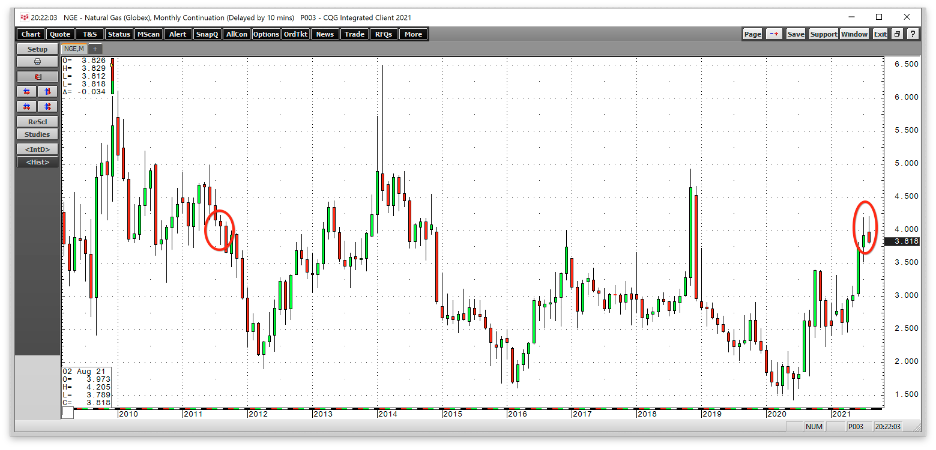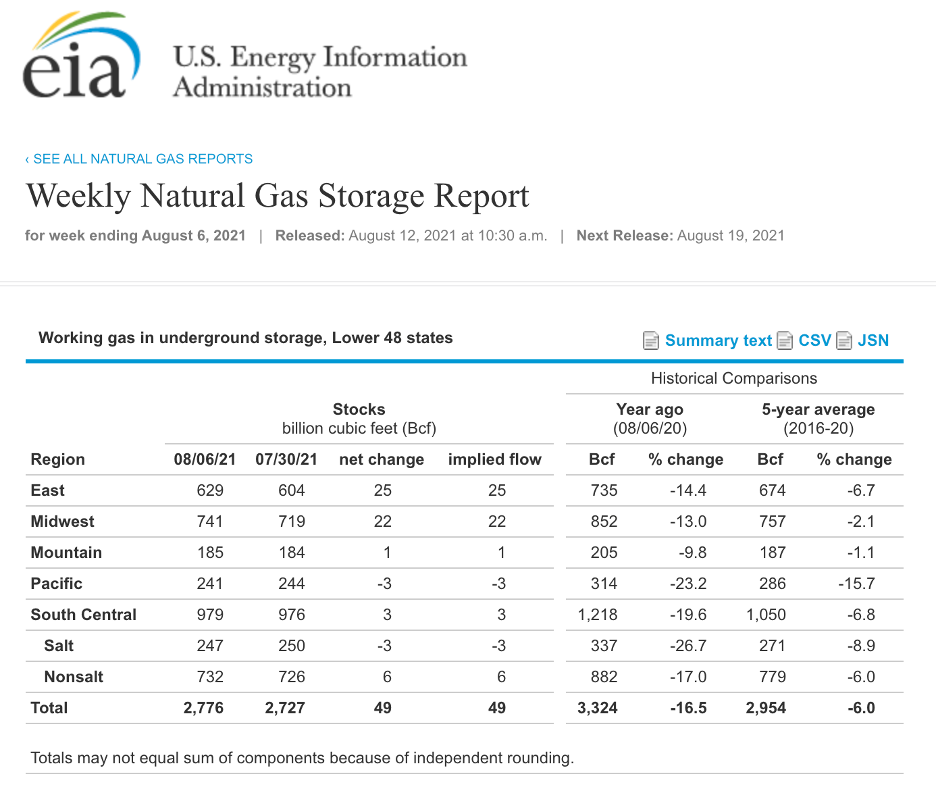SoFi stock falls after announcing $1.5B public offering of common stock
This article was written exclusively for Investing.com
- A new high and a correction
- Natural gas reached the highest price in August since 2011
- A higher base price because of US energy policy
- Warren Buffet saw value in June 2020
- Expect a wild ride this winter- Inventories are low
When producers extract natural gas from the earth’s crust, the energy commodity is highly combustible. The price action in the natural gas futures arena can be just as volatile because the market has a three-decade history of price explosions and implosions. Since natural gas began trading on the CME’s NYMEX division in 1990, the price range has been $1.02 to $15.65 per MMBtu. Natural gas rose above the $10 level when hurricanes wreaked havoc along the US Gulf Coast in 2005 and 2008. The NYMEX delivery point is the Henry Hub in Erath, Louisiana.
Massive discoveries of quadrillions of cubic feet of reserves in the Marcellus and Utica shale regions of the US caused the price to decline. As necessity is often the mother of invention, the demand side of the energy commodity’s fundamental equation adapted. Natural gas replaced coal in US power generation. Technological advances allowed for liquefying natural gas for export beyond the pipeline system. Today, US LNG travels by ocean vessels to areas of the world where the price is appreciably higher.
Over the past year, natural gas had made higher lows and higher highs. At a time of the year when the price traditionally experiences weakness, the energy commodity continued to rise, reaching its latest peak in early August at $4.205 per MMBtu, the highest price since late 2018. Meanwhile, natural gas rose to the highest price in August in a decade.
A new high and a correction
After reaching a low of $2.594 on Mar. 18, September natural gas futures made higher lows and higher highs, reaching a peak at $4.2050 per MMBtu on Aug. 4 and 5.

Source: CQG
The daily chart highlights the rise to a double top in early August, with nearby natural gas futures reaching the highest price since November 2018. The double top began a correction that took the price to a low of $3.789 on Aug. 18 before bouncing over $3.80 per MMBtu by the close on Aug. 18. Open interest, the total number of open long and short positions in the natural gas futures market, rose with the energy commodity’s price, typically a technical validation of a bullish trend in a futures market. The correction pushed the price momentum and relative strength indicators below neutral readings. Daily historical volatility was steady at just below 30%. The trend remains bullish as September futures did not challenge the first technical support level at the July 7, $3.495 per MMBtu low.
Natural gas reached the highest price in August since 2011
While natural gas reached the highest price since November 2018 at the start of the peak demand season, it moved to the highest price in August in a decade. After reaching a twenty-five-year low in June 2018, the energy commodity traded to the highest price in August since 2011.
Source: CQG
The monthly chart shows that the last time natural gas futures were above the $4 per MMBtu level in August was in 2011.
Increasing energy demand in 2021 on the back of vaccines and an easing of social distancing guidelines, robust and growing worldwide demand for US LNG, and warmer than average temperatures increasing the requirements for cooling lifted natural gas’s price over the past months. However, the shift in US energy policy has been more than a cherry on top of the other bullish factors.
A higher base price because of US energy policy
On his first day in office, President Biden canceled the Keystone XL oil pipeline project. In May, his administration banned drilling and fracking for oil and gas on federal lands in Alaska. The President has followed through on his campaign pledge to address climate change by initiating a dramatic shift in US energy policy. The administration has embraced a greener path away from dependence on fossil fuels. Increasing regulations and funding for alternative energy sources is weighing on crude oil and natural gas output.
Meanwhile, the US still depends on hydrocarbons for power. Most of the transportation infrastructure runs on oil products, and natural gas replaced coal for power generation. The demand side of natural gas’s fundamental equation is rising while supplies are falling because of the shift in energy policy. We should expect rising base prices for oil and gas as the US output declines under the current administration.
Warren Buffet saw value in June 2020
Warren Buffett lived up to his reputation as a leading value investor last June. When natural gas fell to its quarter-of-century low in late June, his Berkshire Hathaway (NYSE:BRKa) purchased the natural gas transmission and storage assets from Dominion Energy (NYSE:D) at a bargain price of $10 billion. Buffett paid $4 billion in cash and assumed $6 billion in debt. The acquisition increased Berkshire’s exposure to all US interstate natural gas transmission from 8% to 18%.
The price of natural gas nearly tripled from the June 2020 low at the most recent high. One year later, Warren Buffet’s investment was golden as he bought the low in the energy commodity.
Expect a wild ride this winter- Inventories are low
We are now approaching the time of the year when natural gas begins shifting towards winter, peak season mode. Natural gas tends to reach highs during the winter months as demand for heating rises. The first target stands at the November 2018 $4.929 per MMBtu high. Above there, in early 2014, the nearby futures contract reached $6.4930 per MMBtu.
The shift in US energy policy is weighing on output while LNG demand is increasing natural gas demand. The most recent inventory data from the Energy Information Administration (EIA) reveals that natural gas stockpiles are at low levels compared to previous years.

Source: EIA
The chart shows that natural gas in storage across the United States stood at 2.776 trillion cubic feet for the week ending on Aug. 6. The inventories were 16.5% below the same time in 2020 and 6% under the five-year average for early August. Meanwhile, the crowdsourcing platform Estimize currently has a consensus forecast for an injection of only 24.69 bcf for the week ending on Aug. 13.
At the end of the past three injection seasons in November, natural gas stocks stood at the following levels:
- In 2020 inventories peaked at 3.958 tcf
- In 2019, the high was at 3.732 tcf
- In 2018, stocks topped out at 3.234
- Based on the flows into storage over the 2021 injection season, inventories look likely to go into the winter months when stocks fall at the lowest level in years.
Fasten your seatbelts; the 2021/2022 winter season could be a wild ride in the natural gas futures arena.
